Moving to a new place? One thing many people forget is how to wrap a chair for moving properly. Chairs may not seem fragile, but they can get scratched, ripped, or broken during the move. Let’s make sure that doesn’t happen to you.
Simply put, to wrap a chair for moving, first cover it with a soft blanket or cloth to protect it. Then, use plastic wrap or bubble wrap to hold everything tightly and keep it safe from scratches or damage.
Don’t worry—we’ll walk you through everything step by step. We’ll also talk about the best way to wrap chairs, depending on their type and material.
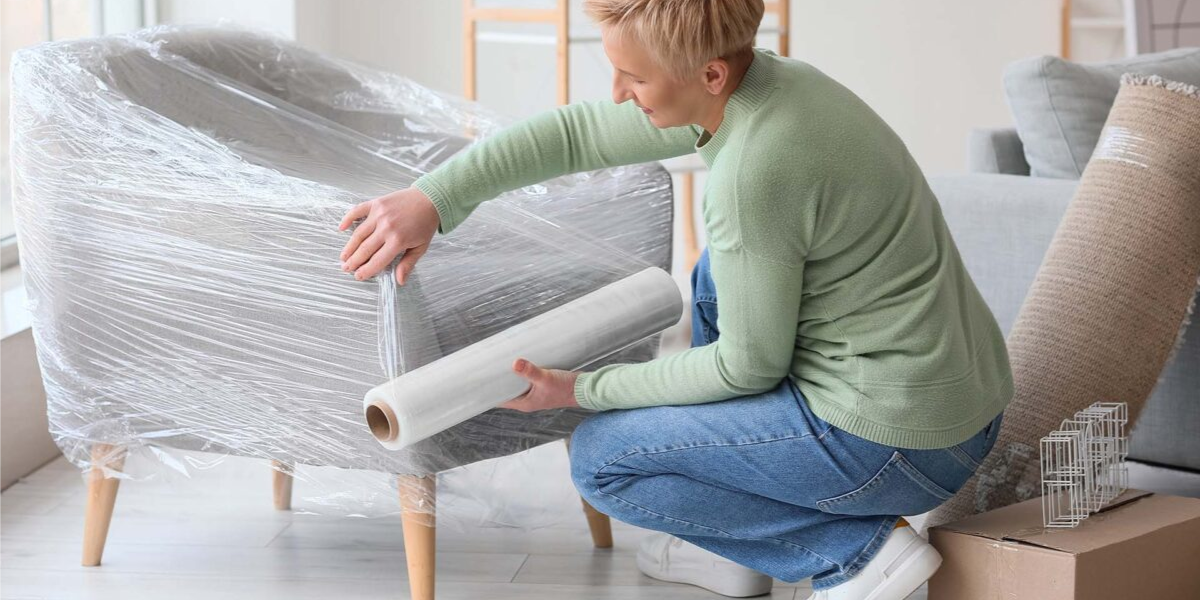
Chairs are used all the time, so they already get small damage even without moving. But when you move to a new place, it’s even easier for chairs to get scratched, dirty, or have loose parts. The fabric or leather can tear, and wooden legs can crack if not protected.
That’s why wrapping your chairs is super important. In fact, a study shows that 68% of people had scratched furniture while moving, 45% had broken chair legs, 39% had torn upholstery, and 54% got stains or dirt on their chairs.
So yes—wrapping your chairs really helps keep them safe!
Different chairs need different care. Here’s a quick table:
| Chair Type | What to Focus On |
| Dining Chairs | Legs, corners, fabric seat |
| Office Chairs | Wheels, backrest, armrests |
| Recliners | Heavy body, moving parts |
| Rocking Chairs | Curved base, delicate parts |
| Fabric Chairs | Dirt/stain protection |
| Leather Chairs | Avoid tape touching leather |
We’ll talk more about how to wrap dining chairs for moving, and other types, in the steps below.
Before you start wrapping, make sure you have the right stuff. Here’s a list:
Tip: You can get these materials from moving supply stores or order them online.
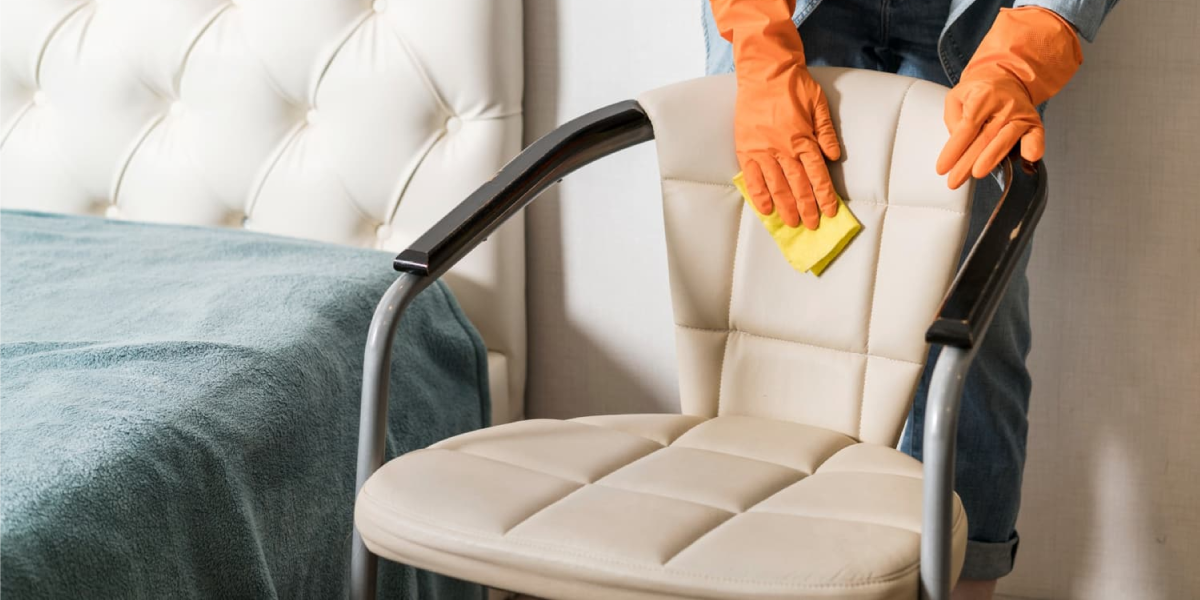
Before wrapping, clean your chair.
Why? Because wrapping a dirty chair can trap moisture or dust inside and damage it.
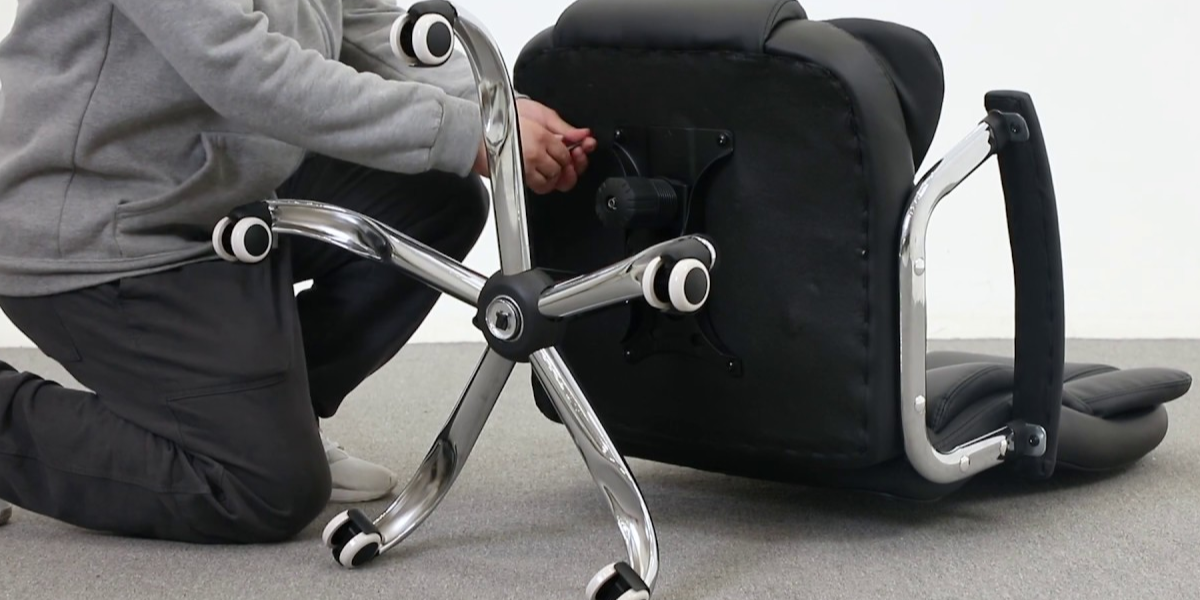
Some chairs can be disassembled.
This helps you save space and avoid damage.
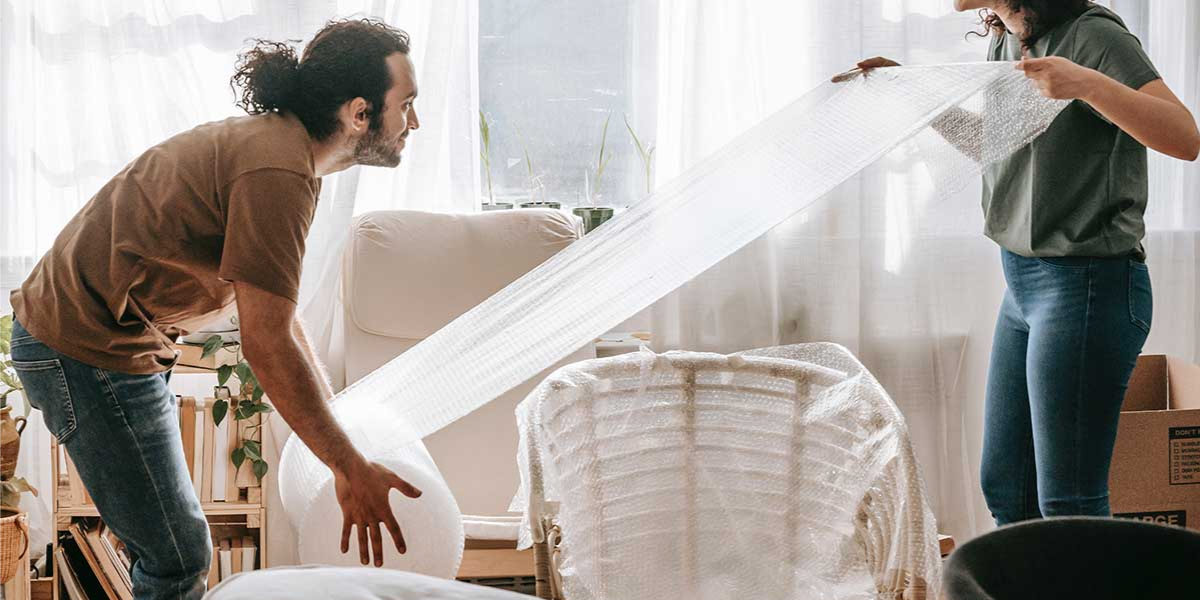
Now it’s time to protect the main parts—the seat and the back of the chair. These parts can easily get scratched, torn, or stained during a move, so let’s wrap them the right way.
If your chair has fabric, first cover it with a clean cotton sheet, a thick cloth, or even an old bedsheet. This keeps the fabric safe from dust and scratches. After that, you can add a layer of plastic wrap or bubble wrap on top to hold everything in place.
If your chair is made of leather, don’t let tape touch the surface—it can leave marks or peel off the leather. Instead, gently wrap the chair in bubble wrap, then secure it using plastic wrap around it.
For office chairs, make sure to wrap the backrest and armrests carefully, especially if they’re padded. These parts can easily lose shape or get damaged.
This simple step gives the chair a protective coat, kind of like putting a jacket on to keep it safe!
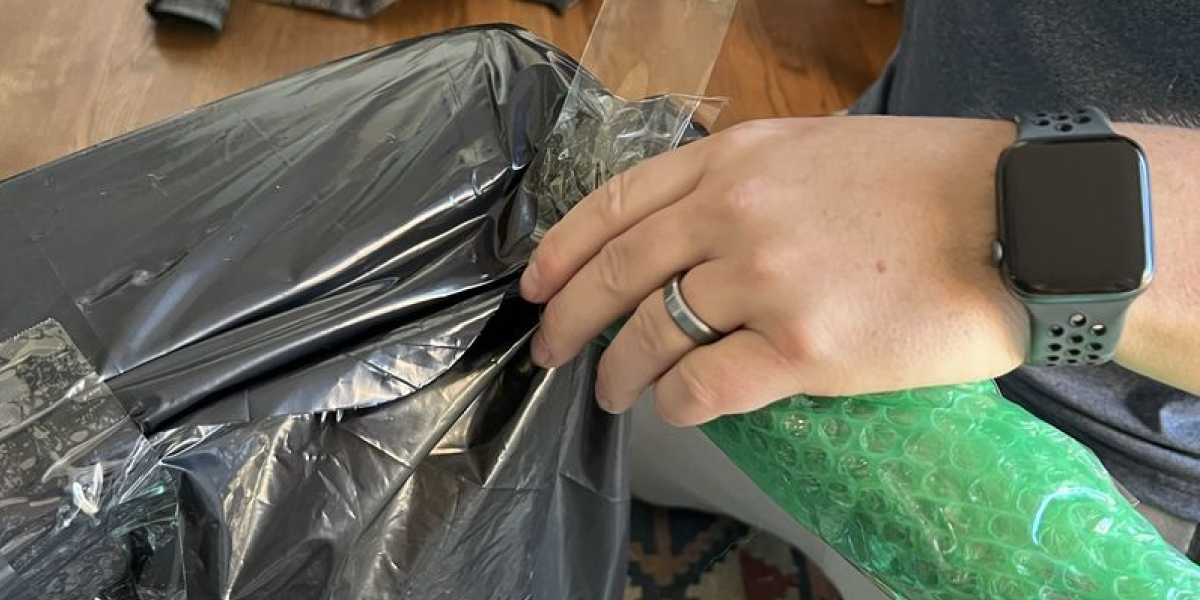
Chair legs are one of the most common parts to get damaged during a move. They can get scratched, chipped, or even break if they bump into walls or other furniture. That’s why it’s really important to protect them well.
Start by wrapping each leg with bubble wrap or foam padding. This gives them a soft layer to absorb any bumps. Then, secure the wrap with tape—but be careful not to stick the tape directly on wood or leather legs, as it might leave marks.
Once the legs are wrapped, cover the entire bottom part of the chair with a moving blanket, thick cloth, or old sheet. After that, tightly wrap the whole chair with plastic wrap to keep everything secure and in place.
If you’re wrapping dining chairs, this same method works great. You can also stack two chairs together if the design allows it—just put a soft layer between them so they don’t scratch each other. Then, wrap both chairs together using a moving blanket and secure it with stretch wrap.
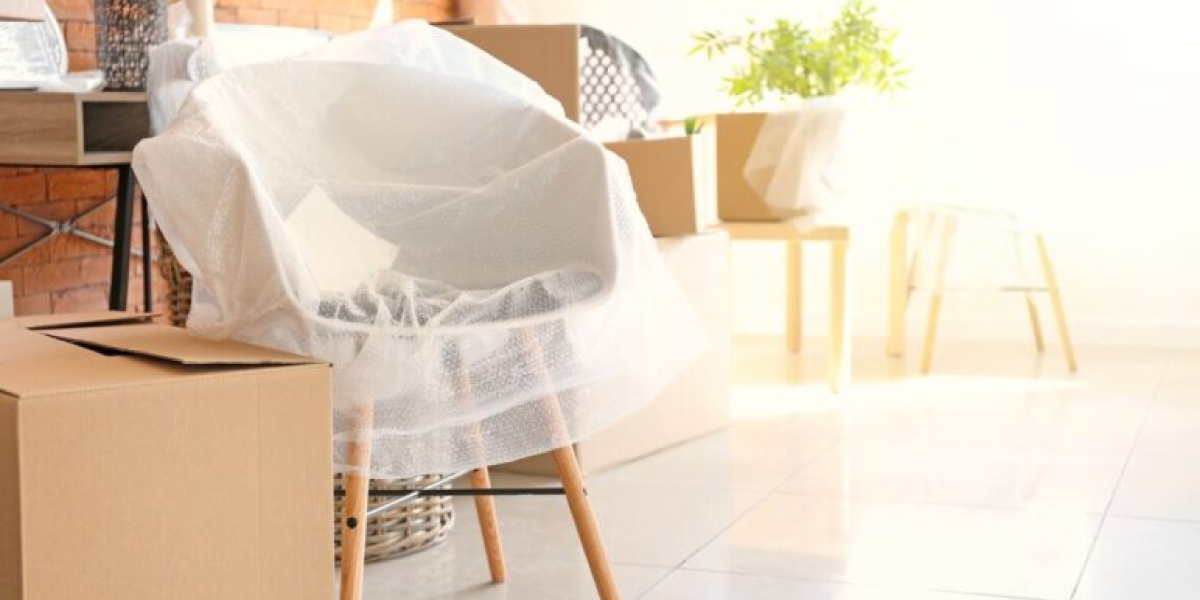
Once everything is wrapped:
Pro Tip: Label the wrapped chair if it’s fragile, or if parts are packed with it.
Let’s help you avoid problems:
| Mistake | What Happens |
| Not cleaning the chair | Dirt stains, smells later |
| Using only tape | Leaves sticky marks |
| No padding on legs | Legs can break or chip |
| Not labelling chairs | Movers may stack things on them |

On moving day, it’s important to be careful with your chairs, even after wrapping them. When loading them into the moving van or truck, place the chairs on their sides, not upside down, so their legs or arms don’t bend or break.
Never stack heavy boxes or furniture on top of chairs—that can crush the seat or damage the frame. If a chair is delicate, like one with thin legs or soft fabric, try to keep it near the top of the pile or safely tucked into a corner where it won’t get bumped.
And for big chairs like recliners or office chairs, it’s best to use a moving dolly or trolley so you can roll them without dragging or lifting too much. These simple steps help keep your chairs safe and make your moving day go smoother!
Besides, are you interested to learn how to wrap furniture for moving? Here is a detailed guide for you to check.
If your chair is:
…then it’s better to hire professional movers. They know the best way to wrap chairs and keep them safe.
So, that’s all about how to wrap a chair. Wrapping a chair for moving is actually simple once you know how to do it. Now you’ve learned what materials you need, like bubble wrap, blankets, and plastic wrap. You also know how to protect each part—the seat, back, and legs—and how to give extra care to fabric, leather, or wooden chairs. You’ve seen what mistakes to avoid, like using tape directly on leather or stacking heavy things on chairs. Just take your time, wrap each chair gently and properly, and they’ll reach your new home safe, clean, and damage-free.
Also, for your easy understanding, we’ve many detailed guides on how to wrap a sofa, a TV, a bed, a bed frame, and a mattress for moving. You can check those out and get a clear idea.
Yes, you can use cling film or plastic wrap to hold everything in place. It works well after covering the chair with a cloth or blanket. Just make sure it’s strong enough not to tear.
If your chair can be taken apart easily, it’s a good idea. Removing the legs or arms makes wrapping and moving safer. Keep screws and parts in a small labelled bag.
First, lock the wheels if you can. Then wrap the base with bubble wrap and use plastic wrap to keep it all secure. Try not to lift by the wheel area to avoid breakage.
Only stack chairs if they’re made to be stacked, like many dining chairs. Put a blanket or towel between them. Wrap the stacked set together tightly.
Wrap any sharp edges with foam or extra bubble wrap first. This stops them from tearing other items. Cover everything with a thick blanket or sheet after that.
You can, but it’s risky. Chairs can get scratched, torn, or dirty during a move. Wrapping protects them from all that damage.
It usually takes 10–15 minutes to wrap a chair properly. If the chair is large or needs extra care, it might take a little longer. Go slow to do it right.
Yes, if they’re still clean and in good shape. Blankets, sheets, and plastic wrap can often be used again. Just fold and store them neatly after the move.
Keep them in a dry, safe corner of your home. Make sure nothing heavy is placed on them. It’s best to stand them on their sides or upright if possible.
Use old bedsheets, towels, or blankets instead of buying new ones. Combine them with plastic wrap or string to hold everything. It saves money and still keeps your chairs safe.




